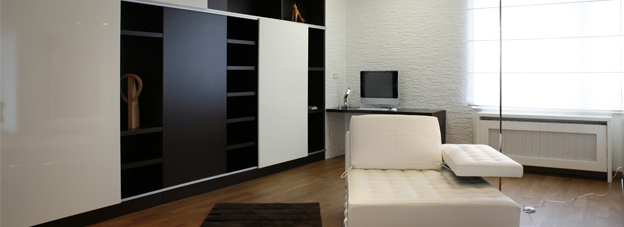 |
|
|
| |
 |
| SBS is a condition where building occupants undergo adverse health effects like headache, dizziness, drowsiness, tiredness, depression, eye irritation, allergy and respiratory problems without being clinically diagnosed as having a specific medical problem.
Besides, constant exposure to high CO2 levels also leads to lack of alertness, concentration & memory loss |
| |
| |
 |
|
|
| |
| |
| |
| |
| |
 |
|
|
Conceptual
- What is the difference between ventilation through ERV and one without ERV?
-
In normal ventilation without ERV the temperature of fresh air coming into your Air Condition is the same as outside temperature, this increases the load on your A.C. as it has to now cool this hot & humid air having a temperature of 30 C to 40 C with RH up to 80 %. At the same time though the stale air which has to be exhausted, has a temperature of 22 C to 24 C with RH 45 % to 55 %.
With ERV the coldness and dryness of the exhaust air is recovered and transferred into the incoming hot and humid air without any cross-contamination in the air, thereby recovering up to 70% energy for the total recovery models and up to 90% energy for only sensible models without consuming any additional energy.
- What is the difference between sensible energy recovery and latent energy recovery?
-
Sensible energy recovery pertains to recovery of heat or temperature whereas latent energy recovery pertains to recovery of moisture from the air. Total recovery pertains to the recovery of both sensible and latent energy.
Installation and Technical Details
- What are the various options for ERV installation?
-
With a split AC system in the premise you have to install stand alone ERV system with its own duct for fresh air supply and stale air exhaust. With a central AC system the core unit from the ERV can be coupled with the existing Air Handling Unit.
- Is there any possibility of cross contamination between outgoing exhaust air and incoming fresh air?
-
No. Fresh Air supply and Stale exhaust air have a different path with common walls for energy exchange.
- Can an ERV or its core unit retrofit into an existing A.C. premise?
-
The ERV or the core unit can be retrofit and coupled with the existing AHU of the A.C. system
- Is the ERV tested against industry standards?
-
The core unit through which this exchange takes place meets the Japanese JIS standards and every unit is certified for its rated performance.
- Is there any maintenance required for the ERV or its core unit?
-
As long as the filters are regularly cleaned there is no other maintenance required.
- What is the life of the ERV?
-
The core unit from the ERV has a life of 5 to 7 years depending on its usage. ERV motors have a life of about 10 to 15 years. Filters are to be replaced every 3 to 5 years.
Commercial
- How do you justify the additional cost of ERV or only Core unit from the ERV?
-
With an ERV or Core unit the size of the equipment tonnage of your A.C. is down sized by 10% to 20%.
If you take into consideration the capital cost savings from reduced tonnage and the annual recurring savings on energy cost, your investment in ERV or its Core unit is paid back in the very first year itself.
(Refer to our ERV Calculator)
- By installing only the Core unit instead of the complete ERV is there any price advantage?
-
Substantial capital cost saving and nil operating cost if only the Core unit is fitted in your existing Air Handling Unit instead of the complete ERV. And this does not dilute the efficiency in energy recovery.
|
|

